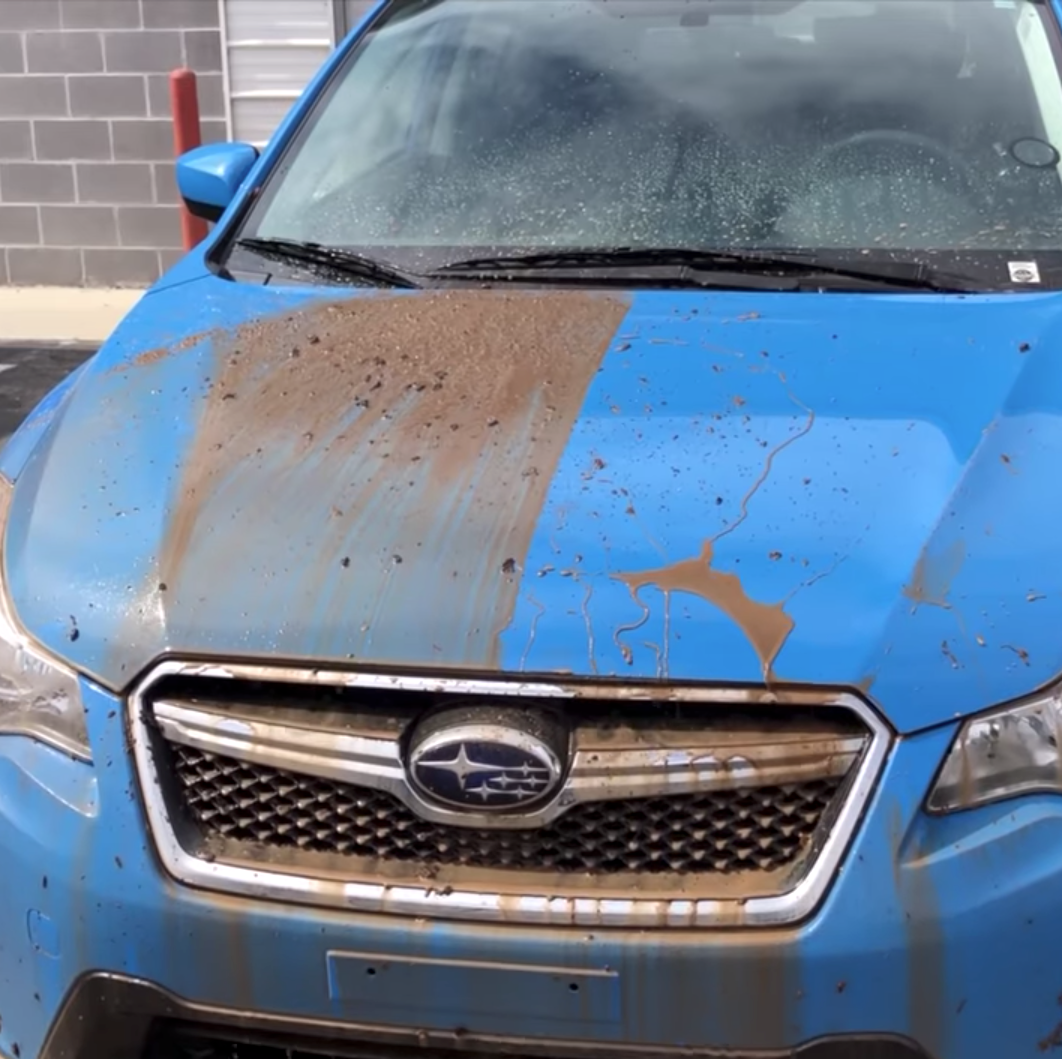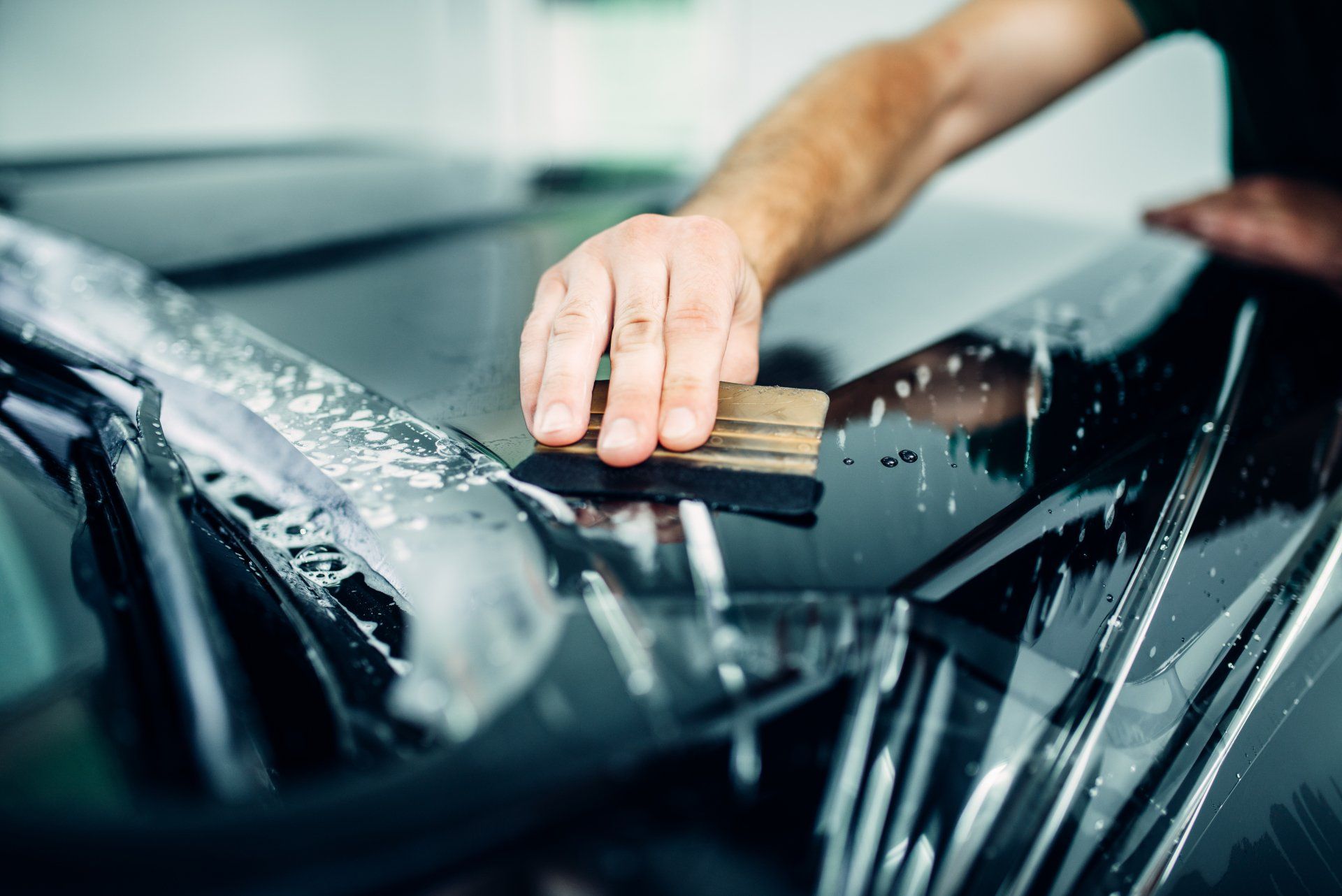Ceramic Finishing vs. Typical Wax: Which Offers Better Long-Term Defense?
The dispute in between ceramic coatings and traditional wax for car security has actually amassed significant focus among auto fanatics and professionals alike. Ceramic layers boast superior durability and resistance to ecological variables, yet the complexity of their application elevates questions regarding accessibility and usefulness.
Summary of Ceramic Covering
Ceramic finish has actually gotten significant appeal amongst vehicle fanatics and detailers alike due to its advanced safety qualities. This ingenious modern technology is developed to create a sturdy, hydrophobic guard over an automobile's paint surface, dramatically boosting its resistance to ecological impurities such as dust, UV rays, and chemical spots. Unlike traditional wax, which offers a temporary layer of defense, ceramic coatings bond at a molecular level with the paint, providing resilient sturdiness-- typically extending beyond 2 years with proper upkeep.
The application procedure entails careful preparation of the vehicle's surface area, consisting of cleaning and brightening to make sure optimal bond. As soon as applied, the coating remedies to develop a durable layer that not just includes depth and gloss to the paint however additionally simplifies upkeep. With its hydrophobic residential properties, ceramic layer permits water and dirt to glide off more quickly, reducing the regularity of laundries and decreasing the danger of swirl marks.
Furthermore, ceramic layers are readily available in various formulations, enabling users to pick items tailored to their certain needs and choices. In general, ceramic coating stands for a significant innovation in paint protection technology, supplying superior efficiency compared to traditional alternatives.
Overview of Typical Wax
Typically considered a staple in automotive care, wax functions as a prominent selection for those seeking an uncomplicated technique to improve and safeguard their lorry's paint - ceramic coating. Automotive wax typically comprises natural components, such as carnauba, or artificial compounds, created to produce a safety layer externally of the paint. This layer not only enhances the vehicle's gloss and shine but additionally offers an obstacle against ecological impurities
The application of wax is typically user-friendly, making it available for both specialists and DIY fanatics. It can be applied by hand or equipment, enabling flexibility in the detailing procedure. When used, wax needs a curing duration, after which it solidifies to form a safety covering. Wax is likewise known for its capacity to fend off water, advertising a beading impact that helps in the avoidance of water places and rust.
Nevertheless, while wax works for improving the aesthetic appeal of a lorry, it is very important to keep in mind that the defense it provides might necessitate extra constant reapplication compared to alternate products, such as ceramic coverings. In general, standard wax remains a preferred choice for those focusing on convenience of use and immediate visual renovation.
Sturdiness and Long Life Comparison
While both ceramic finishes and traditional wax deal protective advantages for automobile paint, their durability and longevity vary dramatically. Traditional wax, typically made from all-natural carnauba or artificial polymers, normally supplies a safety layer that lasts around 3 to 6 months. This relatively brief life expectancy requires routine reapplication to preserve optimum defense.
In comparison, ceramic layers are engineered from sophisticated nanotechnology, developing a covalent bond with the paint surface. This leads to a robust, hydrophobic layer that can withstand for 2 to five years, relying on the product and ecological conditions. The remarkable toughness of ceramic coatings is credited to their chemical framework, which offers improved resistance to scrapes, UV rays, and oxidation.

Security Versus Ecological Factors
Shielding an automobile's paint from environmental elements is essential for maintaining its look and worth gradually. Cars are frequently subjected to a selection of components, consisting of UV rays, bird droppings, tree sap, acid rainfall, and road grime, all of which can endanger the stability of the paintwork.
Ceramic finishes supply a robust defense against these environmental aggressors. Unlike conventional wax, which can deteriorate rapidly under UV direct exposure, ceramic finishes create a resilient, hydrophobic layer that stands up to the damaging impacts of sunlight and toxic wastes. This innovative modern technology develops a chemical bond with the lorry's surface, using premium defense that lasts for years, even in extreme conditions.
Traditional wax, while simpler to apply, generally calls for frequent reapplication and supplies minimal resistance to contaminants and UV rays. Over time, it can break down, leaving the paint prone to scratches and oxidation. In comparison, ceramic layers keep their safety high qualities much longer, considerably lowering the risk of paint damages and making certain that the vehicle keeps its aesthetic charm. Because of this, ceramic finishes are increasingly acknowledged as the premium choice for long-term protection versus ecological aspects.
Application and Upkeep Differences
The methods of application and succeeding maintenance for ceramic coverings and typical wax differ substantially, affecting the general user experience and efficiency of each product. Ceramic coverings need a more intricate application procedure, typically involving surface area prep work that includes washing, sanitizing, and brightening the car. When the surface is all set, the ceramic finish is used in click for more info a regulated setting, typically needing specialist know-how to ensure proper curing and bonding to the paint.

While both products boost vehicle look, the Get More Information longer-lasting protection supplied by ceramic finishes might warrant their preliminary investment, regardless of the more requiring application procedure. Conversely, typical wax remains a prominent selection for those looking for a less complex, albeit short-term, remedy.

Final Thought
In final thought, ceramic coatings demonstrate considerable benefits over conventional wax in regards to durability and environmental security. With a life-span extending two to 5 years and premium resistance to UV rays, dust, and chemical discolorations, ceramic finishings supply a more reliable option for lasting vehicle maintenance. The application procedure may require expert expertise, the resulting price financial savings and decreased regularity of reapplication underscore the value of ceramic coverings for those seeking ideal lorry defense.
The dispute between ceramic layers and standard wax for automobile protection has gathered significant interest amongst automotive lovers and specialists alike. Unlike standard wax, which supplies a momentary layer of defense, ceramic finishes bond at a molecular degree with the paint, supplying lasting sturdiness-- commonly prolonging beyond two years with proper maintenance.
While both ceramic layers and traditional wax deal safety advantages for automotive paint, their sturdiness and long life vary considerably. For car lovers seeking lasting protection, ceramic finishes offer a compelling advantage over traditional wax items.
In verdict, ceramic layers demonstrate considerable benefits over typical wax in terms of sturdiness and ecological protection.
Comments on “How to Apply Ceramic Coating and Achieve Professional Results”